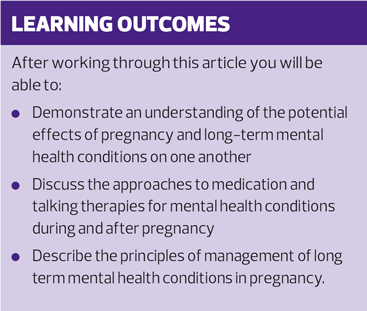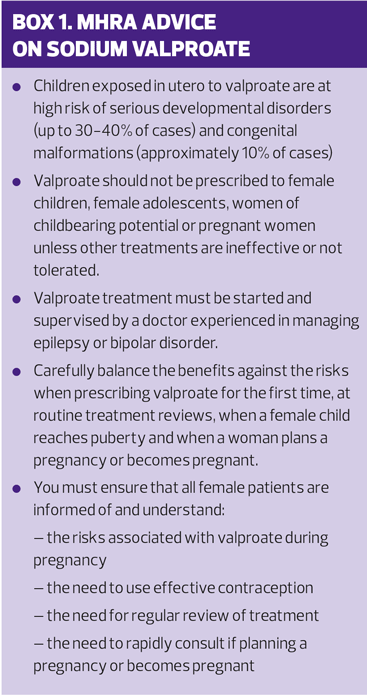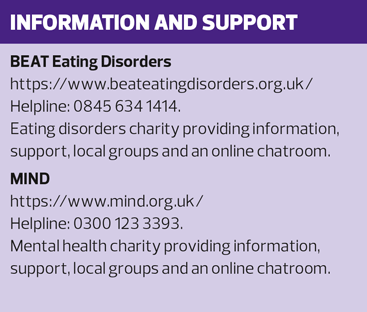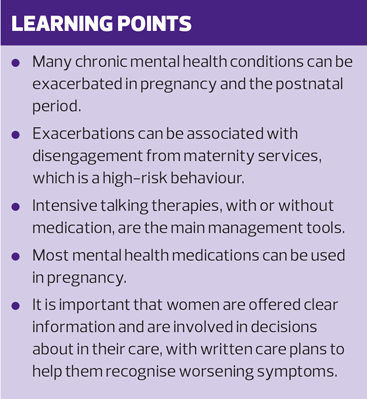Optimising management of long term conditions in pregnancy - Part 3
Dr Mary Lowth
Dr Mary Lowth
MA, MB., BChir, FRCGP, PGCME
The final part of our series on the long term conditions which can affect pregnancy focuses on both pre-existing mental health conditions, and those arising in the perinatal period
Mental health conditions have a wide spectrum of presentation. They may occur as a continuation, exacerbation or relapse of pre-existing illness, or as new onset conditions triggered by pregnancy or childbirth.1,2 Some women will have planned their pregnancies, but for some pregnancy may be unplanned, unexpected, or concealed.
New symptoms, relapses and exacerbations may be hidden by patients for fear of negative perceptions, of being hospitalised, or that their ability to parent may be questioned. They may disengage from care, particularly during exacerbations, because of their symptoms or because of concerns about taking medication.
Women with mental health conditions may need intensive input in pregnancy. It is important to involve them in their care, using written care-plans, and to have regular review and clear communication between teams. Failure to attend appointments should be followed up.
Before going on to discuss specific mental health conditions, we need first to talk about the drugs that may – or should not – be used in their treatment.
PSYCHOTROPIC MEDICATION
Women need clear advice about the pros and cons of medication during pregnancy, and to be involved in decision-making, as highlighted by recent press coverage about sodium valproate (Box 1).3 The potential benefits and harms of medication should be weighed against the possible consequences of no treatment, or of changing or stopping it. If medication is needed then the safest drugs in the lowest possible dose should be used, with single drug regimens preferred over combinations.
Breastfeeding is encouraged, for its many benefits to mother and baby, except in women taking valproate, carbamazepine, clozapine or lithium. Women on other psychotropic drugs should be aware of the small risk of side effects in the baby, particularly at higher doses.
Antipsychotic medication is usually needed for new onset psychosis, which usually also requires hospital admission. Woman who have taken a drug associated with fetal malformations before realising they are pregnant should be offered appropriate antenatal screening.
SPECIFIC MEDICATIONS
Tricyclic antidepressants (TCAs), selective serotonin-reuptake inhibitors (SSRIs) and noradrenaline-reuptake inhibitors (SNRIs)
TCAs have, in the past, been linked to an increased risk of fetal cardiac defects, but these risks are thought to be very low. SSRIs in early pregnancy may slightly increase the risk of the baby developing heart or neural tube defects, but risks also appear very low. SSRI/SNRI used late pregnancy, particularly paroxetine and venlafaxine, can lead to withdrawal symptoms in the baby, including jitteriness, floppiness, spasms and fitting, hypoglycaemia and (rarely) pulmonary hypertension.
These drugs are present in breast milk, and levels could possibly become high enough for the baby to experience side effects. This needs to be weighed against the risk of discontinuation in the mother, and the benefits of breastfeeding.
Benzodiazepines
Benzodiazepines should be avoided in pregnancy and the postnatal period except for short term treatment of severe anxiety and agitation.
Antipsychotics
If a pregnant woman is stable on an antipsychotic and likely to relapse without medication, it is usually considered safest to continue. However, depot antipsychotics are not usually offered to pregnant or breastfeeding women.
Antipsychotic medication can cause excessive weight gain, and increases the risk of gestational diabetes. Women should be advised on weight gain and diet in pregnancy, and offered monitoring for gestational diabetes.
Anticonvulsants (valproate, carbamazepine and lamotrigine)
Valproate and carbamazepine are avoided in pregnancy and breastfeeding, due to a risk of fetal malformations. Lamotrigine levels may need monitoring.
Lithium
There is a risk of fetal heart malformations when lithium is taken in the first trimester, and although the level of risk is uncertain, lithium is usually stopped, gradually, before or during pregnancy. If continued, lithium levels need careful monitoring and, as the baby can have problems straight after delivery, lithium is stopped during labour.
Women with bipolar disorder are at a significant risk of relapse postnatally, but babies can experience lithium toxicity via breastmilk so alternative medication is offered if mothers plan to breastfeed.
SPECIFIC MENTAL HEALTH CONDITIONS
Pregnancy is a high-risk period for women with a history of severe mental illness. When women first consult about pregnancy or planned pregnancy, it is important to ask about any past or present severe mental illness. Those with a positive history are at higher risk and should be referred to secondary care; ideally to a specialist perinatal mental health service.
DEPRESSION AND ANXIETY4
Anxiety disorders (e.g. generalised anxiety disorder, panic disorder, phobias and post traumatic stress disorder) and depression are under recognised in pregnancy. Major depressive disorder affects 10-20% of women in pregnancy. Practices nurses can have an important role in screening for these conditions, by asking screening questions about low mood, low interest, anxiety and worrying.
Management in pregnancy
Generally, the benefits of treatment considerably outweigh the risks.5
Management depends on the severity. Women with mild to moderate depression may find support and self-help enough to see them through, but many others will need talking therapies or medication. Women with a history of severe depression who develop mild depression in pregnancy or postnatally are offered medication early, and those with more severe depression are offered both psychological interventions and medication.
Women who are already taking medication for mild depression when they become pregnant can consider gradually coming off their medication (if they are well), but those already on treatment for more severe depression face a more difficult choice, as they are more likely to experience exacerbation if stopping medication. They may be offered high intensity psychological intervention, and medication may need to be changed.
POSTNATAL DEPRESSION
Over half of mothers experience a short period of feeling low, moody, and weepy after childbirth. These ‘baby blues’ last from a few days after the baby’s birth until around ten days post-partum. It does not usually need treatment other than support from family, friends and midwife.
Postnatal depression typically starts a little later than baby blues and occurs in 10-15% of new mothers. It can be prolonged and can vary from mild to extremely severe. Women have a low mood, may lose interest in life and their baby, and usually feel extremely guilty, or that they have failed. It is more common in:
- Women who have experienced depression or postnatal depression before
- Those who had difficult labours, and
- Those who have little support.
It is managed with antidepressants and talking therapies and, sometimes, exercise programmes.
POST-PARTUM PSYCHOSIS
Postpartum or puerperal psychosis is a severe episode of mental illness that begins suddenly days or weeks after delivery. Symptoms vary and often change rapidly, but can include depression and/or mania. Disordered thoughts, delusions and hallucinations may involve the baby, rationality is impaired or lost, and the lives of mother and baby are at risk. Post-partum psychosis is a psychiatric emergency.
Around 1 in 1,000 women are affected. It is more common in women who have had previous psychotic illness, particularly bipolar disorder. There is a strong genetic component: if a mother or sister was affected a women has a 3% chance of developing it if she has had no previous mental health problems, but a 25-50% chance of developing it if she has. Women at high risk may start medication in late pregnancy or just after delivery, a decision they would normally take with their psychiatrist and mental health team.
SELF-HARM6,7
Self-harm can take many forms including cutting, hitting and overdosing, but most often involves lacerating arms and legs with sharp implements. It is usually a coping mechanism for managing difficult or powerful emotions by externalising them. Patients say this helps prevent the feelings from getting worse. Self-harm can be addictive; it can also escalate and become more dangerous. A risk assessment of the self-harming behaviour, including exacerbating factors and support mechanisms is needed at presentation.
Self-harm as a response to emotional stress is likely to have been established prior to pregnancy, but it may become worse due to the mood changes of pregnancy, or to a sense of powerlessness or fear around pregnancy, labour and parenthood. It is more common in in women who had a negative experience of childhood themselves. Women with a history of self-harm are more susceptible to antenatal and postnatal depression.
Management in pregnancy
Self-harm needs to be addressed by addressing the underlying causes. The initial aim may be to prevent or to reduce the behaviour, or to prevent escalation. Talking therapies such as cognitive behavioural therapy (CBT) and cognitive analytic therapy (CAT), a combination of cognitive therapy and psychotherapy, are effective, but can be a slow and gradual process. Any accompanying mental health disorders such as anxiety or depression also need treatment.
Women presenting with self-harm in pregnancy need a community mental health team assessment, including an assessment of their needs, and should have a care plan.
EATING DISORDERS
Eating disorders, particularly anorexia and bulimia, are associated with abnormalities of body image. They most often begin in adolescence, but women may seek help for the first time when pregnant. They can be exacerbated or improved by pregnancy, and may also become worse after giving birth, when women are trying to lose weight.
Anorexia may be associated both with low initial body weight and with poor calorie intake. Both of these increase the risk of miscarriage, prematurity, poor growth in the baby and of needing Caesarean section. Severe anorexia in pregnancy is rare but represents a risk to the lives of both mother and child.
Bulimia in pregnancy is linked to postnatal depression, miscarriage and prematurity. It involves recurrent episodes of binging, followed by a purging behaviour such as vomiting. This can cause electrolyte imbalances, gastrointestinal problems and cardiac arrhythmias, and may increase the risk of hyperemesis gravidarum.
Women with eating disorders need advice on diet and weight gain in pregnancy, and may need repeated review and reassurance. Psychological therapies are offered and can be very effective. Fetal growth monitoring may be needed during the last trimester, and those with severe eating disorders need specialist care.
OBSESSIVE COMPULSIVE DISORDER (OCD)
OCD can be triggered by stressful life changes so can arise for the first time in pregnancy or postnatally. Around 2% of women are thought to be affected by perinatal OCD in the first year after birth. People with OCD experience obsessions, compulsions, or both.
Obsessions are repeated thoughts, urges, or mental images that cause anxiety, such as fear of germs, taboo thoughts about harming the baby, or the need to place things in certain patterns. Compulsions are repetitive behaviours that the person with OCD feels the urge to do in response to an obsessive thought, to relieve the anxiety. Common compulsions include excessive handwashing, arranging things in a certain way, or repeatedly checking things. People with OCD generally can’t control these thoughts and behaviours and spend at least an hour a day on them.
Management in pregnancy
Mild OCD may not need treatment. More severe OCD often responds well to CBT with exposure and response prevention (ERP), which aims to help the woman manage the thoughts without the compulsive response.
SCHIZOPHRENIA8
Schizophrenia is a chronic, relapsing-remitting brain disorder that affects about 1% of people. It usually begins in adolescence, and so is likely to pre-date pregnancy, but it can also present or become worse in pregnancy.
‘Positive’ symptoms, particularly during exacerbations, can include delusions, hallucinations, and disordered thinking and concentration. ‘Negative’ symptoms can include emotional flatness and lack of motivation. Sometimes patients feel pressure to do things that are unwise or harmful to themselves or others. Those stable on treatment are not always symptom free, and may learn to live with their symptoms, but during exacerbations judgement and awareness are impaired, sometimes significantly, and self-care and safety may be severely impaired. Psychotic denial of pregnancy, when the woman denies that she is pregnant and misinterprets signs of labour, is a high-risk complication.
Many women with schizophrenia have normal pregnancies, but pregnancy is a time of increased vulnerability. The risks of disengaging with care are significant. Other risks include:
- Delayed recognition of pregnancy
- Reduced uptake of antenatal care
- Failure to recognise labour
- Higher incidence of obstetric complications.
Women with schizophrenia have a high prevalence of smoking and poorer diet during pregnancy, and a higher incidence of gestational diabetes. Support around nutrition, and advice on alcohol and smoking are important and should be repeated.
There is an increased risk of exacerbation post-partum. Active schizophrenia can adversely affect parenting, and delusions and/or hallucinations about the baby may also interfere with bonding. Negative symptoms, such as apathy or difficulty expressing emotions, may contribute to neglect of self or baby.
Management in pregnancy
Patients should be under a specialist mental health team, but should also be known to the practice: missed appointments should be followed up. Patients may be offered medication, engage in psychological intervention, or both, particularly if they are thought likely to relapse, although depot medication is usually avoided. They need a clear treatment plan for signs of escalation of their condition. Relapse can mean an in-patient stay.
BIPOLAR DISORDER9
Bipolar disorder, previously termed manic depression, is a brain disorder causing dramatic changes in mood, energy, activity levels, and the ability to function. Depressive episodes can last many weeks and may be profound.
Not all women experience full-blown manic episodes, which can involve high risk behaviour and severe thought disorder and usually need hospital admission. Features of escalation of mania can initially be enjoyable for patients as they include:
- Feeling unusually happy or euphoric
- Making grand, often unrealistic plans
- Needing much less sleep but having lots of energy
- Being unusually creative
- Taking more risks
- Having racing thoughts
- Talking more quickly.
As things get worse people may do foolish or dangerous things, take poor decisions and develop disordered thoughts, which prevent normal function, sometimes with hallucinations and delusions.
Management in pregnancy
Bipolar disorder is more likely to relapse during pregnancy than at other times. There is also a significantly increased risk of postpartum psychosis. Women should be under the care of a secondary care team, but should also be known to the practice. Bipolar disorder is often treated with lithium, but lithium is avoided during pregnancy unless other options have been ineffective.
Women need support, advice, information and a clear treatment plan for signs of escalation of their condition. Keeping a mood diary may help them recognise signs their mood is changing, and partners and family should know what to look out for. Regular meals and exercise help prevent exacerbations. Psychological interventions may be helpful, and antipsychotics are offered if stopping lithium. If the condition exacerbates the dose may be increased; if this fails lithium or ECT are the possible options. The postpartum period needs particularly intensive support.
ALCOHOL AND DRUG MISUSE
Alcohol and drug misuse harm both pregnancy and the baby, and may affect a woman’s capacity to look after herself during pregnancy, and her baby afterwards. Both are associated with an increased risk of miscarriage, prematurity and low birth weight.
Alcohol misuse may also cause fetal alcohol syndrome, with facial abnormalities, learning difficulties and poor growth. Opiate addiction leads to opiate dependence in the baby, with withdrawal soon after delivery. There is a higher risk of sudden infant death syndrome, and mothers are statistically more likely to have other blood borne viruses and STIs.
Management in pregnancy
Women are usually referred to a specialist substance misuse service. Alcohol withdrawal in pregnancy often needs an inpatient stay. Opiate detoxification needs collaboration with specialist substance misuse services: pregnant, opiate-dependent women are offered methadone maintenance treatment, which exposes the baby to less fluctuant opiate levels. Methadone is not normally reduced during pregnancy, as reduction is tough for the baby as well as the mother. Some women do not want detoxification, but if possible they should meet the substance misuse team for support. They may have difficulty persuading social services that they can offer a safe environment in which to raise their child.
SUMMARY
Pregnancy is a time of huge physical and emotional challenge and mental health conditions affect, and are affected by it. Mental health conditions can also affect engagement with care, and have the potential to affect future parenting. Women with mental health problems need additional support in pregnancy and postnatally.
The practice has a central role in identifying women at risk, monitoring their well-being and engagement, providing support and information, and acting as a sounding board for their concerns.
REFERENCES
1. NICE: Antenatal and postnatal mental health: clinical management and service guidance
Clinical guideline 192 Published date: December 2014 Last updated: August 2017 https://www.nice.org.uk/guidance/cg192/chapter/1-recommendations
2. Tommy’s: Planning a pregnancy with a mental health condition: 2015 https://www.tommys.org/pregnancy-information/im-pregnant/mental-wellbeing/planning-pregnancy-mental-health-condition
3. Lowth M. Optimising management of long term conditions in pregnancy – Part 2. Practice Nurse 2017; October:28-32
4. NICE CKS (2015): Depression - antenatal and postnatal: https://cks.nice.org.uk/depression-antenatal-and-postnatal
5. Bourke CH, Stowe ZN, Owens MJ. Prenatal Antidepressant Exposure: Clinical and Preclinical Findings. Sibley DR, ed. Pharmacological Reviews. 2014;66(2):435-465. doi:10.1124/pr.111.005207. https://www.ncbi.nlm.nih.gov/pmc/articles/PMC3973612/
6. McLeod J: Scratching the Surface: Royal College of Midwives Magazine, Dec 2010 https://www.rcm.org.uk/news-views-and-analysis/analysis/scratching-the-surface
7. NICE. Self-harm in over 8s: long-term management. CG 133. November 2011 https://www.nice.org.uk/guidance/cg133
8. Jones I. Chandra PS, Dazzan P, Howard LM. Bipolar disorder, affective psychosis, and schizophrenia in pregnancy and the post-partum period: The Lancet; 384(9956): 1789 - 1799
http://www.thelancet.com/journals/lancet/article/PIIS0140-6736(14)61278-2/fulltext
9. Tommy’s website. Bipolar Disorder: https://www.tommys.org/pregnancy-information/im-pregnant/mental-wellbeing/specific-mental-health-conditions/bipolar-disorder
Related articles
View all Articles




